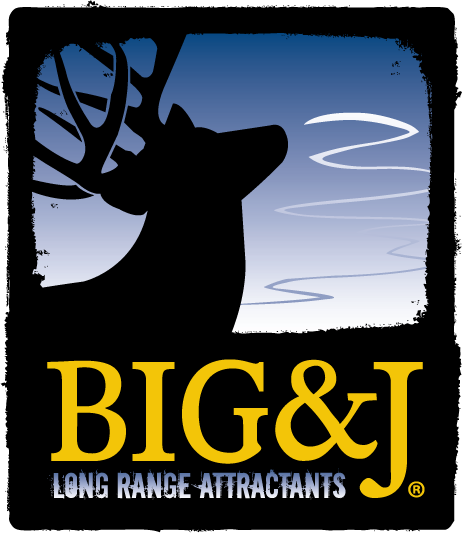By: Heath Wood
One of the most significant factors for someone who genuinely wants to become a better, more intelligent hunter and ultimately grow and harvest bigger deer comes from knowing more about the animal you are hunting.
When one starts researching and learning more about the animal they are hunting, such as whitetail deer, they sometimes must admit that they are wrong. Often people find that they have misconceptions. The main reason for the confusion comes from misinformation regarding a deer’s wants, or more critically, their needs. One of the most common misunderstandings among deer hunters is the use and needs of minerals and supplements throughout the year. I often hear hunters say things like, “the deer are not using the minerals,” they don’t like it,” or the one I disagree with the most, “that stuff doesn’t work.”

Something that has always irritated me throughout the years is how some retailers market minerals and supplements. One error is how they market the time frame of when to use the supplements for maximum potential. They do not place them on the shelf for sale until late July or August, leading customers into thinking that is the time to use them. During this same time frame, hunters start to look ahead a few months and see that the hunting season is approaching. It is no secret that hunters putting out feed, supplements, and minerals all have the same goal in mind - produce healthier and bigger deer, specifically big bucks. However, to generate healthier deer and give antlers the boost to grow to their potential, it takes more than a month or two before the hunting season for deer to benefit. The truth is, deer need minerals and supplements during the latter part of the summer, yet that is not the most crucial timing.
The next misconception that comes from using minerals and supplements is not knowing the benefits of each specific product. I recently talked with Will Griffin, a Ph.D. nutritionist who works with Big and J to help educate hunters about what, when, and why to use supplements for deer. Griffin says he often hears products being used the wrong way and at the wrong time because they do not know what ingredients are in the product they are using. He states hunters often get salt-based products confused with minerals, typically when hunters find the deer are not using the minerals. It is essential to know what the deer need at different times of the year and make sure to put out the right products. He says, for example, he hears products referred to as minerals when they are not a true mineral. “Salt is not a mineral and often gets referred to as minerals,” says Griffin. He added that an actual mineral consists of calcium, phosphorus, vitamins, trace minerals, and ingredients made up of what deer need to help when their nutrients need a boost.

The Big and J product line consists of Deer Dig It and Head Rush products, which are salt and sodium based. Griffin says these products have things that deer need; however, the main nutrient is sodium and salt, which deer crave all year. Then there are products such as Legit, which he considers a true mineral. These products contain more of what deer need and are more time-sensitive, thus solving why deer do not use specific products during certain times of the year.
As I talked more with Griffin about deer and their nutritional needs, he helped lay out a guide for what time of year to use specific supplements and why it works to help deer become healthier, and bucks produce better antler growth.
March, April, May
As hunters, we should care about our entire deer herd rather than focusing only on growing big bucks. To provide deer with protein, energy, and minerals that they cannot get from their natural habitat, supplemental feeding and the use of minerals must start during the spring.
Two things are happening as the spring season begins, and ensuring deer have all the minerals they need to be healthy, it is essential to lay out a few products for deer to consume to grow to their full potential. Does are ready to have their fawns in April and early May. Ensuring they have the nutrition they need to have a healthy fawn and give them the proper nutrition by providing healthy milk is a must. This is the same period that bucks are preparing for their antler growth.
As for what should be poured out for deer during the early spring, Griffin says now is the time to use a true mineral, not as many salt-based products. Griffin recommends Big And J’s Legit, a true mineral containing a high calcium/phosphorus content that promotes antler growth and helps meet the deficiency lacking in the natural habitat. Another product to use in early spring is the Big and J Headrush, a salt-based product; however, Headrush has added calcium and bioavailable trace mineral sources of zinc, manganese, copper, and cobalt. These are all ingredients that help antler growth. The significant difference of Headrush, however, is its incredible long-range aroma that attracts deer.
August/September
One of the most prominent misconceptions that I had when learning more about deer needs during specific times was during July, August, and late summer. For many years I was under the impression that the couple of months of late summer that occur right before the hunting season begins was when deer needed minerals the most. Unfortunately, that is not true.
As I talked more with Ph.D. nutritionist Will Griffin, he explained that during the latter part of the summer, bucks had grown their antlers to their maximum number of inches for that particular year. As of mid to late August arrives, most bucks’ antlers are hardened. Hard antlers mean that the need for minerals has narrowed down tremendously. Griffin then added that does are also beginning to ween their fawns away on their own. No feeding fawns means the amount of milk that needs to be produced has narrowed as well. The need for mineral is not as great.

If deer do not need as many minerals during the latter part of the summer, why does it seem like hunters use more products than any other time of the year? Griffin says it is because the true minerals are not what is being used; it is the salt-based products, and it has more of a taste attraction than the need for minerals. “The true minerals will not get used as much in the later summer,” says Griffin. He then added, “This is why some hunters get discouraged because of deer not using as much as anticipated, instead use products that focus more on taste and smell and contain protein, energy, and few trace minerals.”
Remember, most hunters that put out supplements during the latter part of summer usually do so to get pictures of bucks to inventory what is available for the upcoming hunting season. When gathering data, hunters are usually trying to attract deer in front of a game camera.
Griffin suggests using products such as BB2, which is Big and J’s revolutionary long-range attractant, resulting in more pictures while still providing deer with nutrition. BB2 is a protein-based formula that is easily digestible and has a high aroma. Other products that work great in late summer are Deer Dig It and Headrush, which contains many good ingredients yet has the aroma and salt attraction that keep deer coming back.
September, October, November
The fall months of September, October, and November are known for one thing - hunting season! During these three months across the country, most are chasing bucks that they have been scouting for months. Unfortunately, Griffin explained that these are the worst three months for using true minerals as an attractant. “The states that allow feeding during the hunting season can still benefit from using products such as BB2, Headrush, and Deer Dig-it that attracts deer year-round; however, bucks simply do not want food or minerals during this time,” Griffin explained. Especially during the rut, which generally occurs during late October through November. He added that bucks have breeding does on their minds and do not stop for much food, only to grab a bite occasionally. Deer are coming off lush forages; then, bucks simply do not care as the rut comes. That is why Griffin says these three months of the year have the least activity at mineral sites.
December/ January
Oh, how things can change quickly. The three months of fall find deer, not in need of much nutritional help. The two months following fall are a different story. “The months of December and January could be the two most essential months for giving deer minerals and supplemental feed,” says Griffin. He explained that when bucks come off of a month and a half of rutting activity, their bodies need to replenish more than any other time of the year. “When bucks regain all the nutrition and strength back faster, the better the antler growth will be the following spring,” says Griffin. “Late December and January are crucial to have a buffet of products available for deer,” added Griffin. When I asked Griffin what deer needed during this time of year, he laughed and said, “everything.”
Bucks need to recover from the exhausting toll of the rut. Deer, in general, need to start consuming protein and energy to face the cold months of the winter. Does are also beginning to feed the fawns in their stomachs, and those fawns will need nutrition to thrive when born.
“We always see a spike in mineral intake during this time,” says Griffin. If one will use BB2, Headrush, Legit, and Deer Dig It throughout the winter months, you will form a healthier deer herd than at any other time of year.

